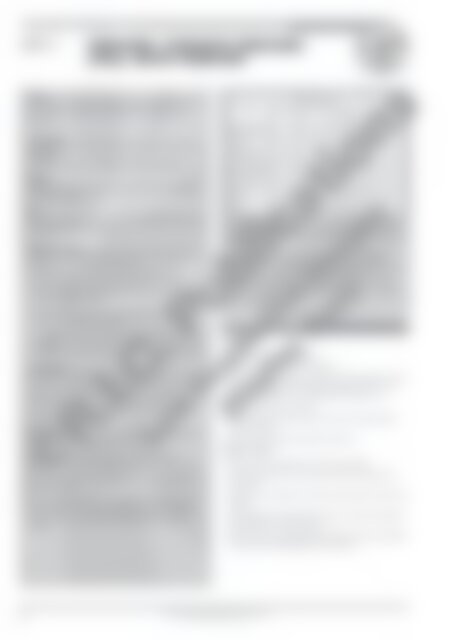RIC-20790_Teaching_Strategies_for_Writing_BkB_word_choices
Create successful ePaper yourself
Turn your PDF publications into a flip-book with our unique Google optimized e-Paper software.
TEACHER INFORMATION<br />
UNIT 2<br />
PRONOUNS, CONFUSING PRONOUNS<br />
(ME/I), WHICH PRONOUN?<br />
Focus<br />
Word <strong>choices</strong> – pronouns, confusing pronouns (me/I), which<br />
pronoun?<br />
Progression<br />
Recognise<br />
Students will recognise a pronoun from modelled examples.<br />
Choose<br />
Students will choose appropriate pronouns from given examples,<br />
with teacher support.<br />
Use<br />
Students will choose and use correct and appropriate pronouns in<br />
supplied and self-written sentences.<br />
Definition of terms<br />
Pronouns are <strong>word</strong>s used to replace nouns.<br />
Personal pronouns are used in place of a person or thing.<br />
A relative pronoun comes be<strong>for</strong>e the clause describing the noun<br />
or pronoun to which it refers.<br />
A possessive pronoun replaces a noun identifying ownership by<br />
the person or thing to which it refers.<br />
The subject of a verb is the person or thing ‘doing’ the action.<br />
The object of a verb is the person or thing affected by the action.<br />
Introduction<br />
Good writers improve their writing by replacing nouns with<br />
appropriate and correct pronouns. The use of pronouns prevents<br />
constant repetition of a noun, making text more manageable and<br />
fluid. It is important <strong>for</strong> students to know the correct pronouns to<br />
use in the context of a sentence.<br />
Possessive pronouns are used to replace the name of a person or<br />
thing; e.g. That bag belongs to him (Dad), it is his.<br />
Note: The <strong>word</strong>s ‘his’ and ‘its’ can be used as a possessive<br />
determiner as well as a possessive pronoun; e.g. his bag, its tail.<br />
The following table shows subjective, objective and possessive<br />
personal pronouns.<br />
Note: Subjective and objective pronouns are required when the<br />
pronoun refers to the subject or object of the verb; <strong>for</strong> example,<br />
I (subject) boarded the ship. The crew welcomed us (object)<br />
onboard.<br />
LESSON NOTES AND PLANS<br />
Introduction<br />
• Discuss the text title with students.<br />
• What are some of the features of poetry?<br />
• Introduce the term ‘pronoun’ and explain that <strong>word</strong>s replacing nouns<br />
are pronouns. Use examples from the classroom; e.g. Tran = he,<br />
Mary = she, the board = it, the tallest boy in the class = he.<br />
• Read the text with or to the class.<br />
• Identify some of the pronouns used in the text to replace people,<br />
places and things.<br />
• Identify single and plural pronouns from the text.<br />
Pronouns – Page 11<br />
Personal pronouns<br />
Person Subjective Objective Emphatic/<br />
reflexive<br />
• Read and discuss the definition at the top of the page.<br />
Possessive<br />
First singular I me myself mine<br />
Second you you yourself yours<br />
Third (male) he him himself his<br />
Third (female) she her herself hers<br />
Third (neuter) it it itself its<br />
First plural we us ourselves ours<br />
Second you you yourselves yours<br />
Third they them themselves theirs<br />
The relative pronouns ‘who’, ‘which’ and ‘that’ are used to refer to<br />
nouns and pronouns; e.g., the boy who, he who, the team that, the<br />
book which.<br />
The correct use of ‘who’ <strong>for</strong> people is more critical. Although<br />
‘which’ and ‘that’ can both be used in many contexts, ‘which’ should<br />
strictly be used to refer to a particular desk (telling which one);<br />
e.g. the desk which is by the door. The relative pronoun ‘that’ has<br />
a broader reference and doesn’t refer to one desk; e.g. the desks<br />
that are by the door.<br />
• Explain that good writers use pronouns instead of repeating the<br />
same nouns.<br />
• Explain why it is important to use the correct pronoun <strong>for</strong> the noun it<br />
replaces.<br />
• Work through the activities with the class as a whole, ensuring they<br />
understand what is required of them.<br />
• Work with those requiring additional assistance while the remainder<br />
of the class work independently on the activities.<br />
8<br />
TEACHING STRATEGIES FOR WRITING (Book B)<br />
www.ricpublications.com.au


















